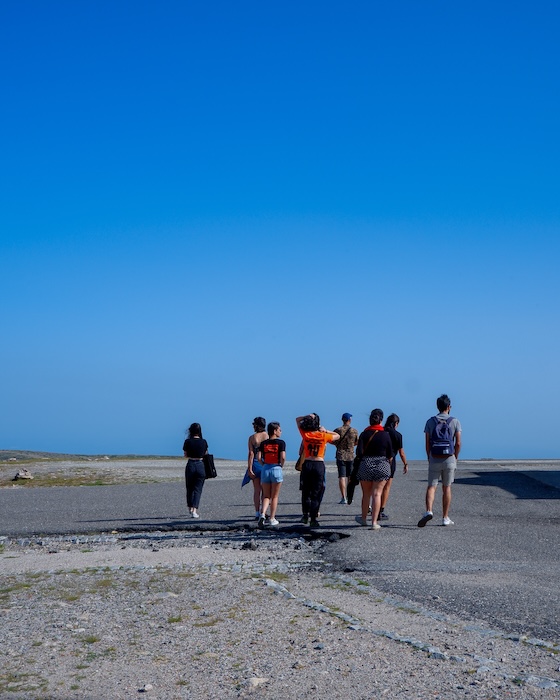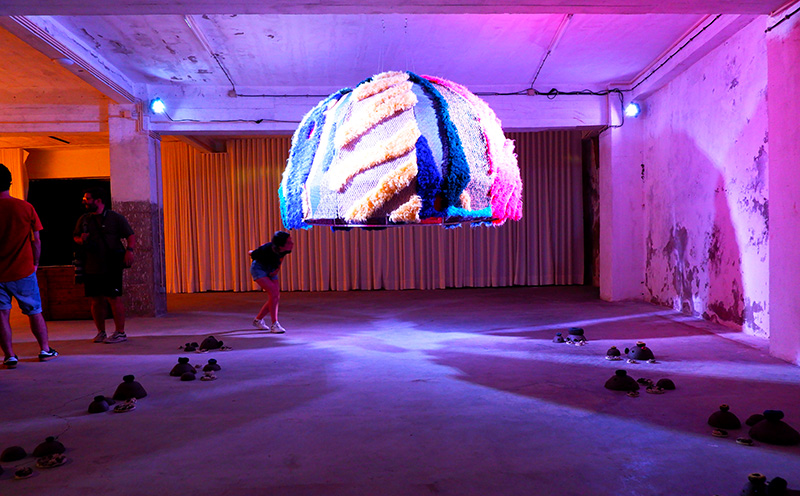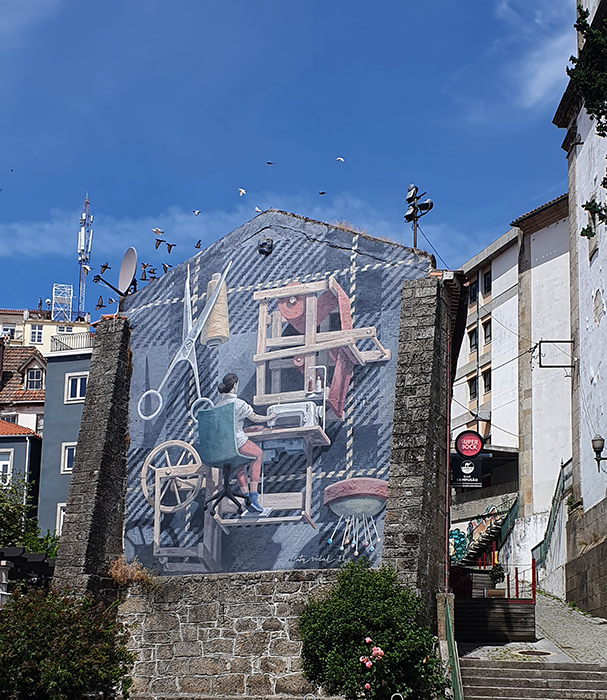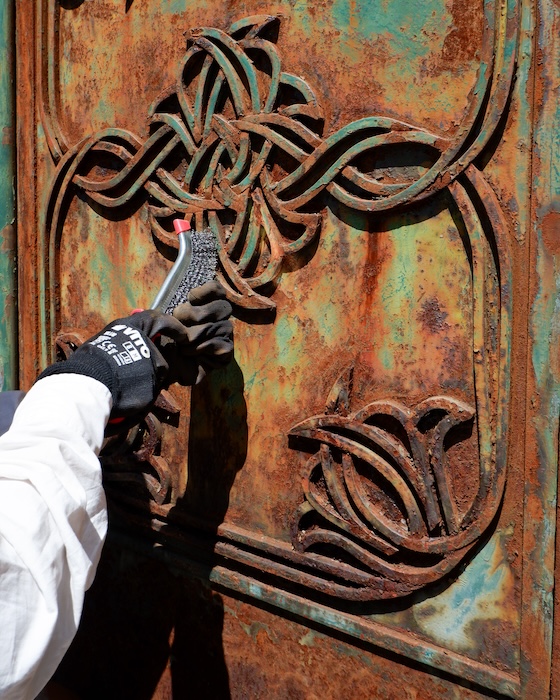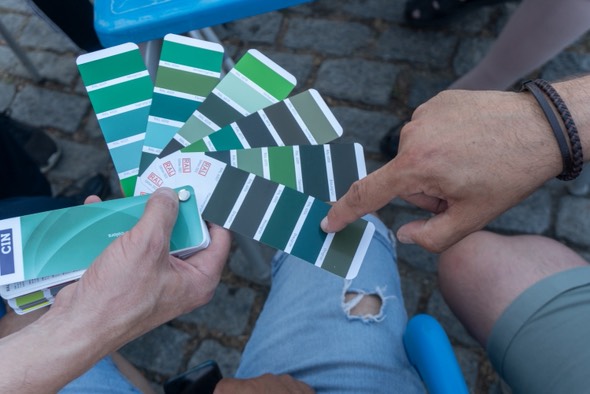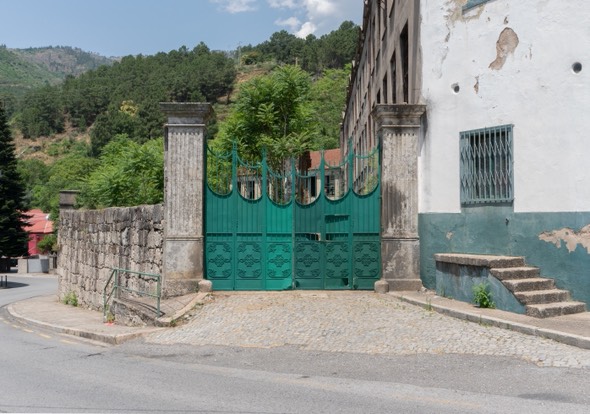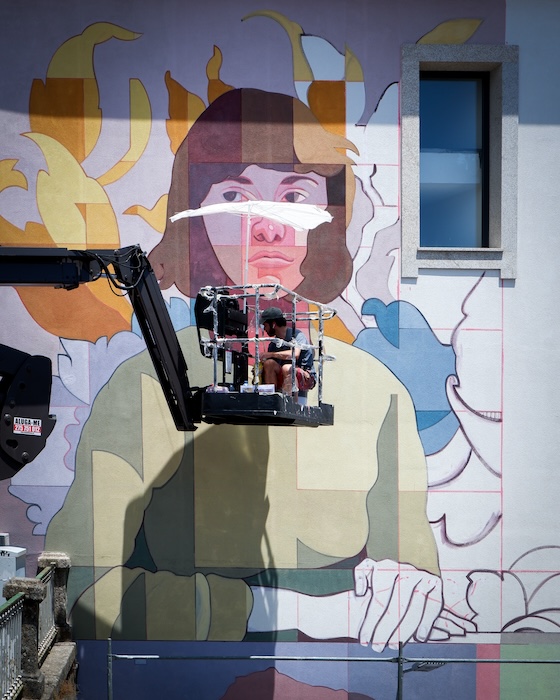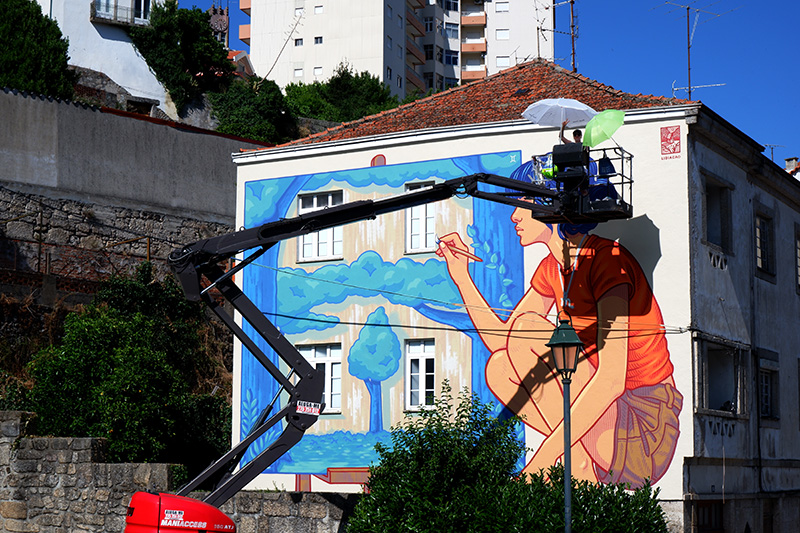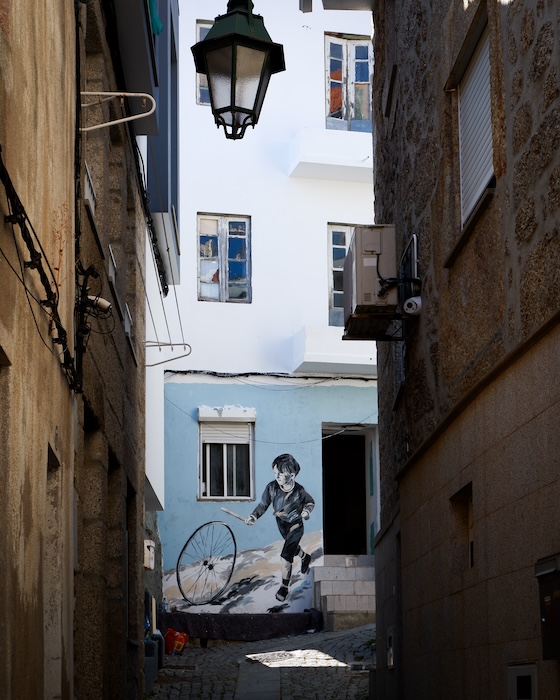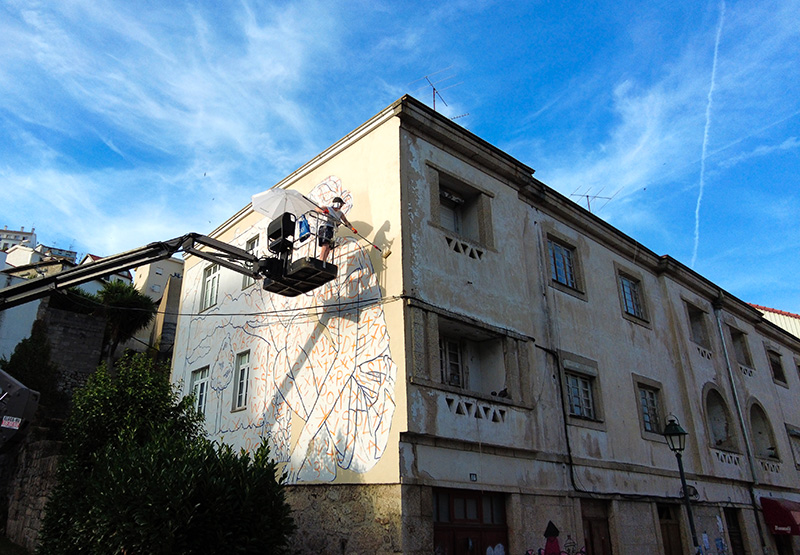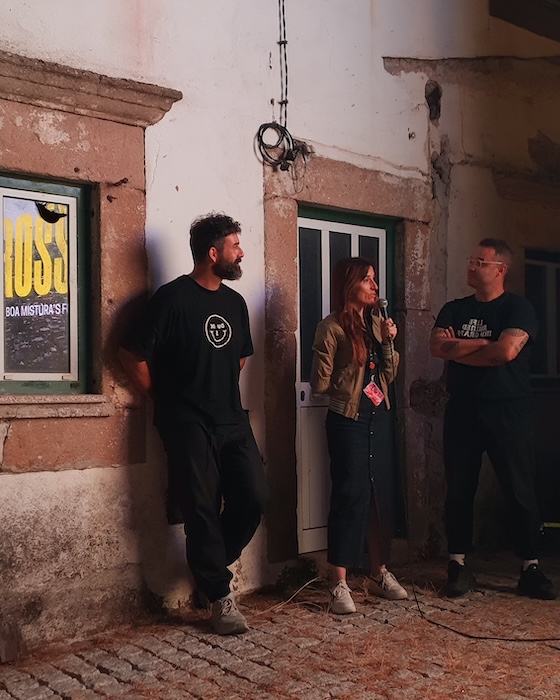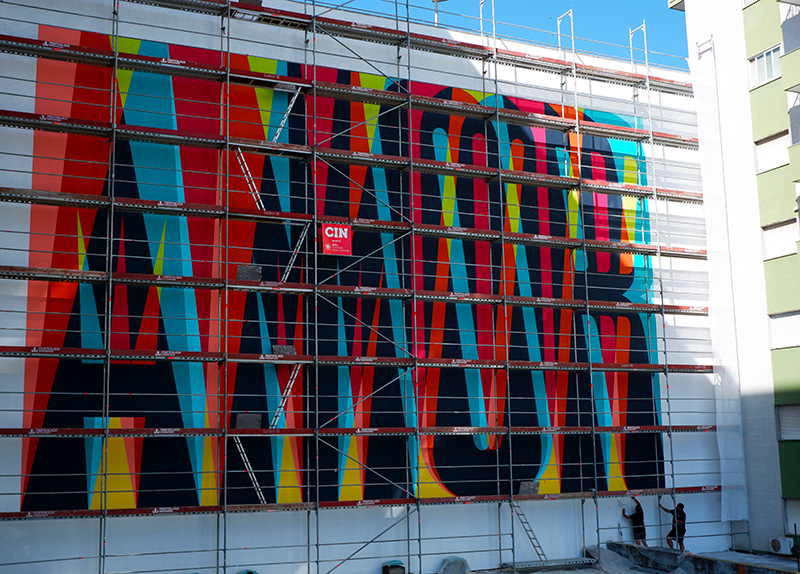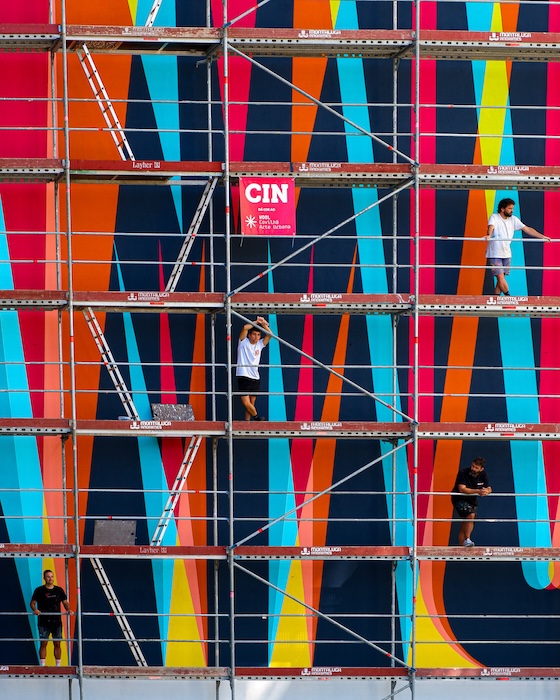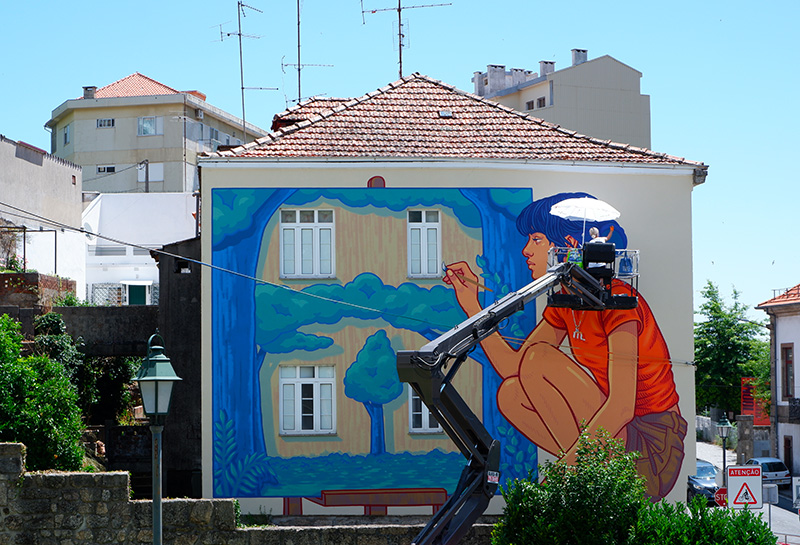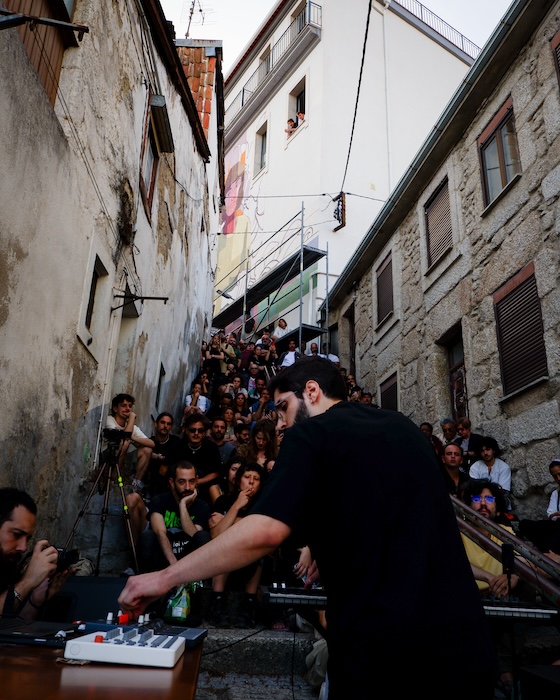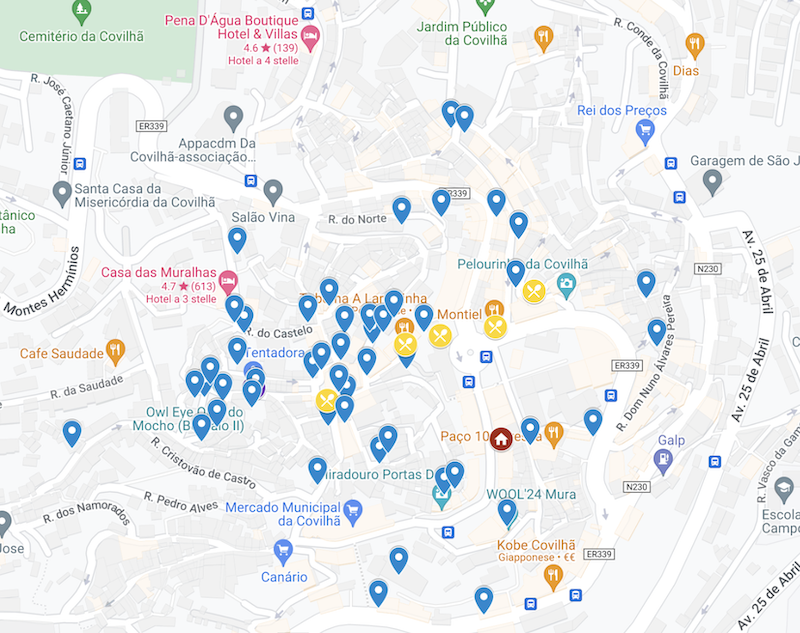I’ve returned to WOOL – Covilhã Arte Urbana, Portugal’s first urban art festival, but this time for the full unfolding. 😊
I’ve written before about Covilhã, and about why WOOL Festival has earned its place among Europe’s most respected street art festivals.
Last year, I arrived after the artists had already packed up their ladders and emptied their paint cans. The murals were still fresh, but the process, the heartbeat of the event, had already passed.
This time, however, I was there on day one a.k.a. the Recognition, as the organizers call it. This precious first day of the festival is more than orientation. It’s not about choosing walls or mapping logistics. It’s about tuning in. Listening to the land. Getting to know the rhythm of the city before making any mark on it.
That morning, we -artists, organizers, and a few of us tagging along- climbed into the Serra da Estrela mountains, all the way to Portugal’s highest peak.
We also wandered the historic center of the small town, visited the city museum, where Covilhã’s story stretches from Roman times to the textile era, and stepped inside two very different factories: one still humming softly with wool production, the other repurposed as a contemporary art space.
This slow immersion into the local context is WOOL’s defining strength. It’s what makes the festival feel less like an exhibition and more like an act of listening. Artists don’t arrive with a concept to impose; they arrive with questions. And from that shared curiosity, the murals begin; not as decoration, but as dialogue.
WOOL Festival ’25: Portraits of a Working Past
The visit to the textile factories is always one of the most affecting parts of the Recognition. You can feel the city’s industrial history in the scent of the fibers, in the rhythm of machinery, in the wool itself (among the softest things I’ve ever touched btw).
It’s no surprise that many artists return to this heritage as a source of inspiration. Over the years, murals by Regg Salgado, Cinta Vidal, Daniel Eime, Marta Lapena, Helen Bur, Addfuel, and Taxis among many others have honored the labor behind Covilhã’s textile identity. Their works translate textures into patterns, stories into portraits, memory into public image.
This year, the Spanish duo Ampparito joined that conversation with a project that blurred the line between restoration, performance, and collective memory. Their site was a grand iron gate at the entrance of a textile factory abandoned since the 1990s. They began by carefully cleaning it, restoring its original luster, bringing back the gravity and elegance it once held when the factory thrived.
Then, armed with a color chart featuring dozens of shades of green, they began asking former workers of the factory one question: Which green was the gate? One by one, they pointed to different tones—each person carrying a different version of the same memory. Some chose a soft olive. Others insisted on a brighter, almost industrial enamel. No two answers matched exactly.
So the gate was not painted in a single uniform shade. It became a mosaic of their recollections—layered, contradictory, real. In the end, it didn’t matter which green had been historically accurate. What mattered was how the gate lived in memory. What emerged was a portrait, not of a factory, but of the people who had passed through it, and the tones their stories had taken on over time.
WOOL Festival ’25: Belonging in Layers
As the week progressed, murals bloomed across Covilhã. Two of this year’s artists turned to the city’s own painterly past for inspiration. Spanish artist Lidia Cao and Greek artist Stelios Pupet both created works influenced by Eduardo Malta, the Covilhã-born portraitist of the early 20th century known for his meticulous realism.
When Lidia saw one of Malta’s paintings up close during our visit of the city museum, a detail caught her eye: rather than signing with his name alone, he had added the symbol of Scorpio—his astrological sign. She decided to mirror the gesture in her own mural. The girl in her painting wears a pendant shaped like a Scorpio, and inside the painted canvas within the mural, Lidia has signed her own sign: Gemini. A subtle, personal thread connecting two artists across time.
Other murals emerged from different layers of the city’s heritage. Portuguese artist Lígia Fernandes painted a trio of site-specific works inspired by traditional children’s games native to the region—games that are quietly vanishing in the age of screens and smartphones. Her goal, she told me, is to spark curiosity in today’s kids. Maybe they’ll ask their parents or grandparents how to play. Maybe the walls will become a bridge.
One afternoon, while I stood by her wall sipping a beer she had kindly offered me, a young girl named Matilda—who lives in the house where the mural was being painted—asked if she could help. Lígia didn’t hesitate. She handed her a brush. “I want her to leave her mark,” she said, watching as Matilda added her strokes. “Because it’s her house.”
Moments like that weren’t rare. Children passed by on their way home from school and offered unfiltered critiques. Teenagers hovered nearby, filming progress for social media. Workers paused during smoke breaks to watch a new image emerge from the walls. This wasn’t art as spectacle; it was art as a presence.
The same blend of people showed up again and again; at the community lunch, the evening concerts, the outdoor film screenings and workshops. WOOL doesn’t “decorate” Covilhã; it animates it. It brings people back into public space, not as spectators, but as participants. It invites them to share time, to occupy streets with purpose, to turn looking into a form of belonging.
WOOL Festival ’25: A Word That Holds Its Ground
One of the most deeply felt moments of shared connections came during the screening of Crossroad, a documentary about the Spanish collective Boa Mistura and their community-based projects around the world.
When the credits rolled, the applause was a thunderous, sustained wave of appreciation. It wasn’t just for their aesthetic choices, but for the way their work centers dignity, dialogue, and human connection.
It was also a thank-you for the mural they had just completed in Covilhã, the largest in the festival’s history. They painted the word “Amor” (Portuguese for “Love”) in bold letters across a towering wall, framed by two taller buildings that almost seem to press in on it.
The mural pulses with energy: vibrant colors, shifting patterns, textures that shimmer in the light. The word stands firm, central and undeniable.
The “Boas” didn’t approach this mural as a response to the place alone, but as a response to the moment. In a time when hate speech is rising, when violent rhetoric echoes across borders, when even the youngest generations aren’t immune to its pull, this wall became an opportunity to call for something else.
Amor stands its ground between those towering façades—as if physically holding its place in a world trying to shrink it. Not decorative, but declarative.
WOOL Festival ’25: A Collective Act of Regeneration.
Being there from the beginning allowed me to see the way Lara Seixo Rodrigues and her team operate—not just as curators, but as mediators. Their work begins long before the first brushstroke and continues long after the last. They maintain year-round contact with the community, ensuring that the festival is not something done to Covilhã, but with it.
Workshops, guided tours, film nights, concerts, community meals, school visits, impromptu conversations on street corners—WOOL is woven from all of this. It’s not just a cultural event; it’s a civic process. A framework for co-creating a city’s future with the people who live in it.
WOOL Festival ’25: A Model Worth Crossing Oceans For
Midway through the week, I met two American women standing in front of Lidia Cao’s mural. They had come from Providence, Rhode Island, drawn not by the Portuguese summer or the mountain views, but by WOOL itself.
“We needed to see it,” one of them said. Both are involved in a public art project back home, and Covilhã kept surfacing in their research, as a model, a reference point, a case study in how to do things differently. “We’ve heard it mentioned again and again as one of the best practices in community-based street art,” the other added. “We wanted to understand why.”
So they came; to walk, to watch, to listen. Their presence made something click for me. WOOL isn’t just transforming Covilhã; it’s offering a framework. One that centers patience, dialogue, and deep respect for context. It proves that street art doesn’t need to be “Instagrammable” to be impacting. And that regeneration doesn’t have to come at the cost of gentrification.
As we chatted, I realized that what WOOL Festival offers isn’t only transformation, it’s a way of working that others want to learn from. A blueprint not for “beautifying” cities, but for weaving them back together.
In a world where urban art can so easily become branding, Covilhã quietly insists on something else.
